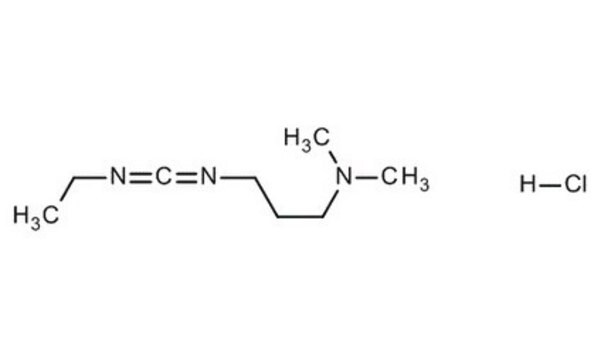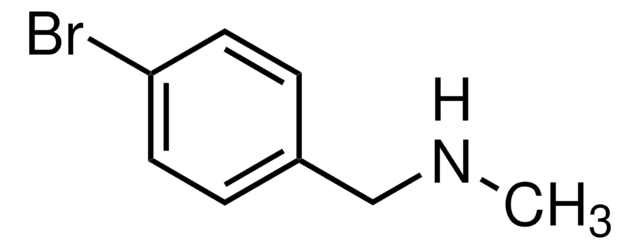N21804
3-Nitrophenylhydrazine hydrochloride
98%
Synonyme(s) :
(3-Nitrophenyl)hydrazine hydrochloride, 1-(3-Nitrophenyl)hydrazine hydrochloride, 3-Nitrophenylhydrazine monohydrochloride, m-Nitrophenylhydrazine hydrochloride
About This Item
Produits recommandés
Niveau de qualité
Pureté
98%
Forme
powder
Pf
210 °C (dec.) (lit.)
Chaîne SMILES
Cl.NNc1cccc(c1)[N+]([O-])=O
InChI
1S/C6H7N3O2.ClH/c7-8-5-2-1-3-6(4-5)9(10)11;/h1-4,8H,7H2;1H
Clé InChI
BKOYKMLGFFASBG-UHFFFAOYSA-N
Catégories apparentées
Description générale
Application
<li><strong>Derivatization agent in analytical chemistry:</strong> 3-Nitrophenylhydrazine hydrochloride is employed as a derivatization agent for the determination of gamma-Hydroxybutyric acid in biological samples infected with Herpes Simplex Virus-Type 1, utilizing LC-MRM-MS techniques, providing enhanced detection capabilities in forensic and clinical toxicology (Osinaga et al., 2022).</li>
<li><strong>Residual analysis in pharmaceutical formulations:</strong> This compound is also used for the quantitative analysis of residual 4-nitrobenzaldehyde in chloramphenicol and its pharmaceutical formulations, employing HPLC with UV/Vis detection after derivatization with 3-nitrophenylhydrazine, offering a reliable method for ensuring the purity and safety of pharmaceutical products (Luo et al., 2018).</li>
<li><strong>Forensic application in decomposition analysis:</strong> Used to derivatized the blood samples collected at the time of forensic autopsy (Matoba et al., 2022).</li>
</ul>
Mention d'avertissement
Warning
Mentions de danger
Classification des risques
Acute Tox. 4 Dermal - Acute Tox. 4 Inhalation - Acute Tox. 4 Oral - Eye Irrit. 2 - Skin Irrit. 2 - STOT SE 3
Organes cibles
Respiratory system
Code de la classe de stockage
11 - Combustible Solids
Classe de danger pour l'eau (WGK)
WGK 3
Point d'éclair (°F)
Not applicable
Point d'éclair (°C)
Not applicable
Équipement de protection individuelle
dust mask type N95 (US), Eyeshields, Gloves
Certificats d'analyse (COA)
Recherchez un Certificats d'analyse (COA) en saisissant le numéro de lot du produit. Les numéros de lot figurent sur l'étiquette du produit après les mots "Lot" ou "Batch".
Déjà en possession de ce produit ?
Retrouvez la documentation relative aux produits que vous avez récemment achetés dans la Bibliothèque de documents.
Les clients ont également consulté
Notre équipe de scientifiques dispose d'une expérience dans tous les secteurs de la recherche, notamment en sciences de la vie, science des matériaux, synthèse chimique, chromatographie, analyse et dans de nombreux autres domaines..
Contacter notre Service technique








